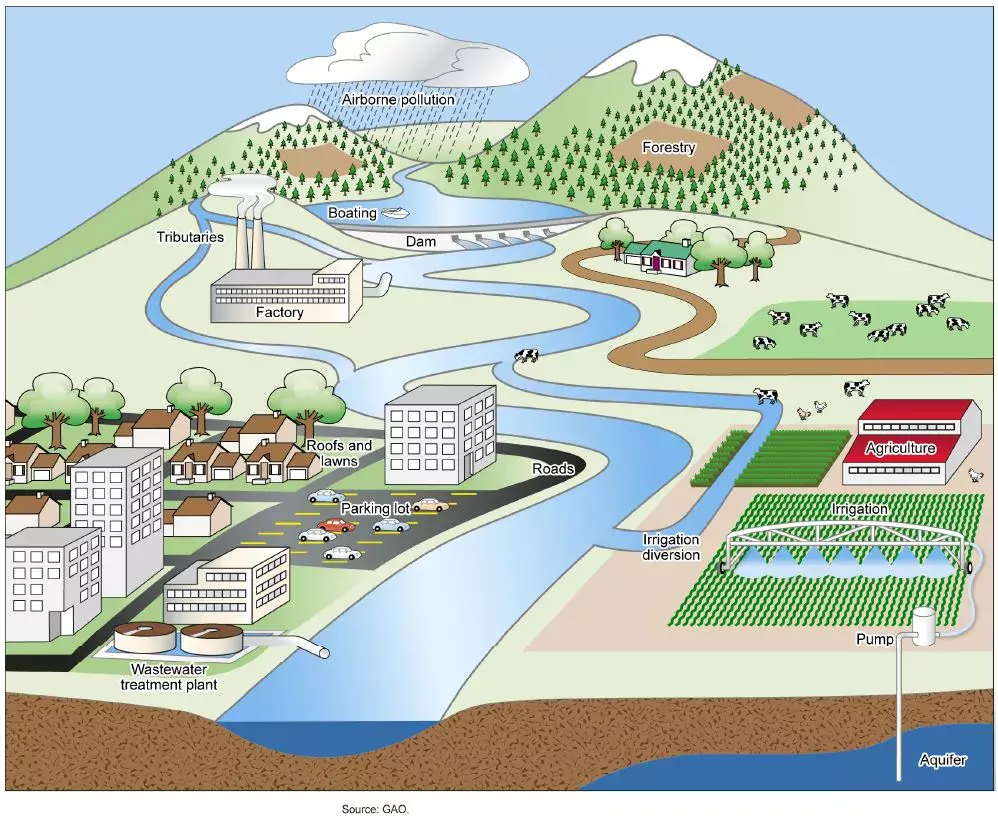Planopedia
Clear, accessible definitions for common urban planning terms.
What Is the Clean Water Act?
The primary environmental law to regulate water pollution in the United States, the Clean Water Act, went into effect 50 years ago, on October 18, 1972.

The U.S. Clean Water Act is one of the foundational environmental regulations in the United States, along with the National Environmental Policy Act, the Clean Air Act, and the Endangered Species Act, among other examples.
The Clean Water Act was enacted in October 1972 as the primary federal law regarding water pollution and environmental protections for the nation's waterways, building on the precedent set by the Federal Water Pollution Control Act enacted in 1948. The full name of the Clean Water Act is actually the Federal Water Pollution Control Act Amendments of 1972, in a reference to its predecessor. According to the U.S. Environmental Protection Agency (EPA), the arm of the federal government with authority over the law, the Clean Water Act "establishes the basic structure for regulating discharges of pollutants into the waters of the United States and regulating quality standards for surface waters."
Clean Water Act Goals and Accomplishments
The Clean Water Act sets an ambitious goal: restoring or maintaining all the nation's waterways as "fishable and swimmable." A half a century later, the Clean Water Act can be credited with numerous successes toward those goals—though the work is not yet complete. "A half century after the passage of the landmark federal Clean Water Act, and almost four decades after the law’s deadline for all waters across the U.S. to be 'fishable and swimmable,' 50 percent of assessed river and stream miles – 703,417 miles nationally — are so polluted they are classified as 'impaired,'” according to a widely cited report published in March 2022 by the Environmental Integrity Project.
The Clean Water Act's accomplishments are perhaps most conspicuous on the Cuyahoga River in Ohio, location of a 1969 fire that contributed to the political support for the adoption of the Clean Water Act. The Clean Water Act is now credited with vast ecological benefits on the Cuyahoga, including the recovery of fish populations and economic development. The Clean Water Act is also credited with generating more than $1 trillion nationwide to upgrade wastewater treatment plants.
To accomplish its goals, the Clean Water Act requires the EPA—along with states, tribes, and territories—to identify, list, and monitor the quality of U.S. lakes, rivers, streams, estuaries, and other water bodies. The Clean Water Act also requires those same agencies and governments to create plans for limiting the outputs from pollution sources. States are required to establish Wasteload Allocations (WLA), measured in a unit called a TMDL, short for Total Maximum Daily Load. Sources of water pollution are required to buy permits to create TMDLs, and regulatory agencies will allow or deny permits based on the state of the waterway.

Clean Water Act Shortcomings
Opinions on the Clean Water Act vary depending on political perspective. Some business interests, including the agricultural sector, oppose most environmental regulations, including the Clean Water Act, reflecting a political divide that continues to influence the enforcement of the Clean Water Act 50 years after the law's adoption. The EPA under the Obama administration, for example, adopted a new clean water rule, known as the Waters of the United States rule, to clarify the long-contested gray areas of the Clean Water Act's definitions of wetlands and undo some of the limitations instituted by the 2006 ruling of the U.S. Supreme Court in Rapanos v. United States. The Trump administration attempted to rescind the rule, though the courts have so far upheld the rule—but that could change depending on an expected ruling by the Supreme Court in the case of Sackett v. Environmental Protection Agency.
Environmentalists argue that the premise of business opposition to environmental regulations like the Clean Water Act is faulty—that most environmental regulations pay for themselves, according to cost-benefit analyses. Environmentalists are more likely to fault the Clean Water Act for failing to live up to its ambitions. Loopholes and inconsistent enforcement explain the gap between the law's ambitions and outcomes 50 years later. A 2021 report by the U.S. Government Accountability Office, for example, found that the EPA lacks the necessary data to effectively maintain permits or enforce pollution limits.
Environmentalists also point out that while the Clean Water Act applies to waste released by identifiable sources, such as factories or mining operations, into pipes or ditches, the law fails to account for pollution from indirect sources, such as fertilizers and pesticides from farm fields and lawns, and oil and other toxic chemicals from city streets and parking lots. To this day, fertilizer runoff from farmland and manure runoff from factory farms are considered the "number of source of water pollution in the United States," according to the Environmental Integrity Project.



























